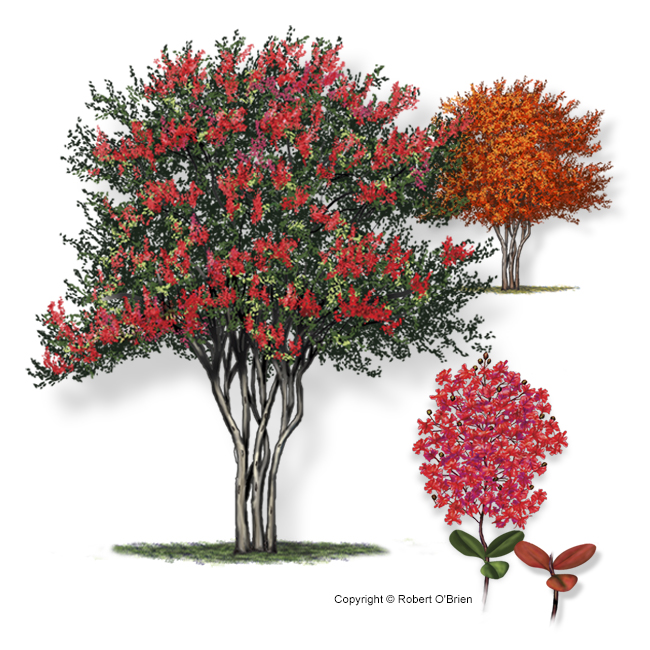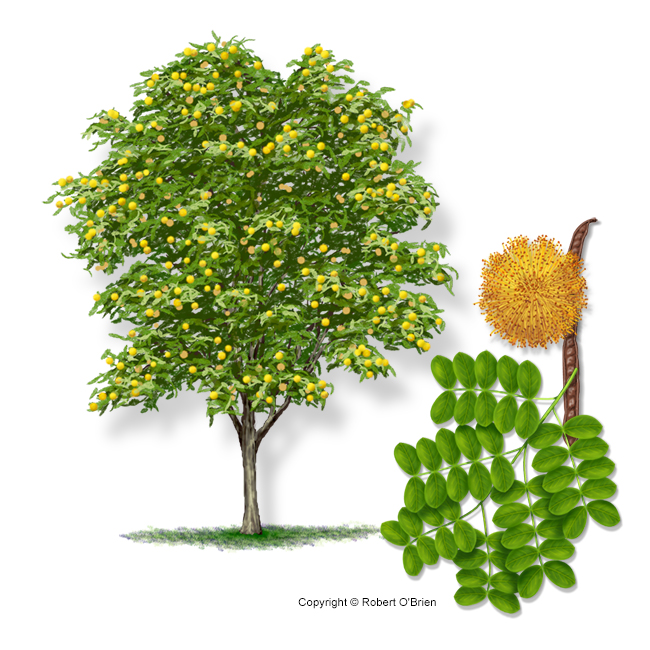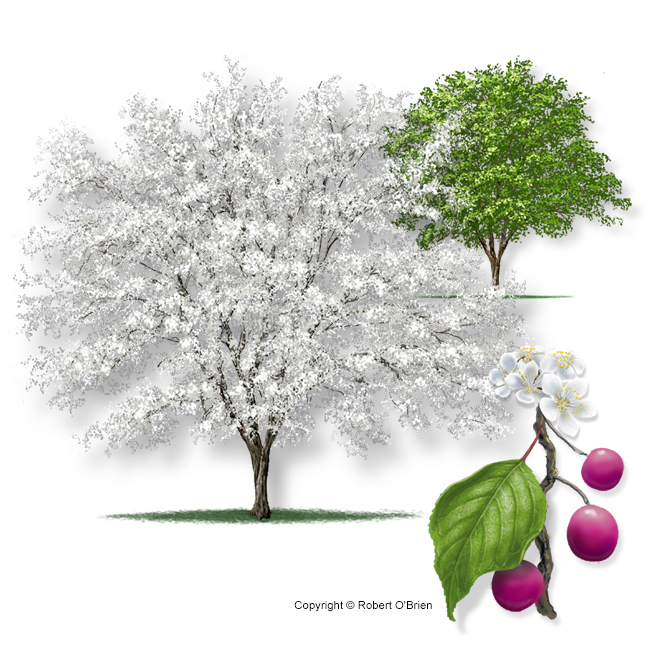Vegetation Management
Trees contacting power lines is the leading cause of power outages, according to federal regulators, and that's especially true during severe weather such as thunderstorms or ice storms.
CoServ has more than 2,800 miles of overhead lines on its network and many of them have trees growing around them. CoServ is committed to reliability and a big part of that is maintaining the trees once every four years.
CoServ's Vegetation Management Coordinators oversee more than a dozen contractor crews who work year-round to cut back trees that are near the lines.
In most instances, CoServ will send out a postcard mailer to your home in advance to let you know that we’ll be in your area. If the work will affect your property or electric service, crews will also notify you with a door hanger.
If trees near CoServ equipment are creating an immediate hazard or emergency, please call 855-938-3496.
Policies for planting around equipment and meters
Padmount transformer boxes: Please maintain a safe zone by keeping any fencing, landscaping, or other obstructions at least 10 feet from the front and 3 feet on the sides and back of the transformer. Remember to consider the plant's mature width prior to planting. Also, permanent structures need to be at least 5 feet from the sides and back. Click here to learn more about Transformer Safety.

Meter bases: Meter bases located on your residence must be kept accessible to CoServ service technicians with a three-foot wide access corridor. No plant material or obstructions may be placed within five feet from the front of the meter, up to a height of seven feet.

Vegetation Maintenace Request
Safety is one of CoServ's core values. If you see trees or other vegetation close to CoServ power lines or equipment, we want to know. Please click on the button below to submit a request.
Request Vegetation Maintenace
North Texas Trees Suitable for Placement near Overhead Electrical Lines
CoServ’s Tree Line Safety initiative can help you make wise decisions on initial tree investment and placement. Trees are a valuable asset to our urban landscape. But, when allowed to come into contact with overhead electrical lines, they pose a serious hazard.
CoServ has a comprehensive tree line safety program to ensure safe, reliable delivery of power to each of our Members. Homeowners can contribute to the reliability of service and help reduce maintenance costs by selecting tree species that have a mature height that will not conflict with overhead lines. Click here to download the PDF guide.

Below are suggested species for our area:

American Smoketree
Growth Rate: Slow
Foliage: Deciduous
Height: 25’
Spread: 25’
Comments: Spikes of purple to pink flowers; distinctive blue-green leaves turn brilliant fall colors.

Carolina Buckthorn
Growth Rate: Moderate
Foliage: Deciduous
Height: 15’
Spread: 15’
Comments: Texas native, reliable fall color, attractive seeds or fruit, seeds or fruit eaten by wildlife.

Chinese Pistache
Growth Rate: Rapid
Foliage: Deciduous
Height: 30’
Spread: 25’
Comments: Reliable fall color, attractive seeds or fruit, seeds or fruit eaten by wildlife.

Crape Myrtle
Growth Rate: Moderate
Foliage: Deciduous
Height: 25’
Spread: 15’
Comments: Profuse spikes of white, pink, or purple flowers through summer, and smooth, peeling bark.

Desert Willow
Growth Rate: Rapid
Foliage: Deciduous
Height: 30’
Spread: 25’
Comments: Showy pink flowers through spring and summer; extremely drought-tolerant.

Eve’s Necklace
Growth Rate: Moderate
Foliage: Deciduous
Height: 30’
Spread: 20’
Comments: Texas native, showy or fragrant flower, attractive seeds or fruit.

Fringetree
Growth Rate: Slow
Foliage: Deciduous
Height: 25’
Spread: 20’
Comments: Texas native, showy or fragrant flower. White sprays of flowers in spring.

Goldenball Leadtree
Growth Rate: Moderate
Foliage: Deciduous
Height: 25’
Spread: 15’
Comments: Delicate foliage and round, yellow flower ‘balls,’ which often appear after a rain.

Goldenrain Tree
Growth Rate: Moderate
Foliage: Deciduous
Height: 30’
Spread: 20’
Comments: Reliable fall color, showy or fragrant flower, attractive seeds or fruit.

Hawthorn
Growth Rate: Moderate
Foliage: Deciduous
Height: 25’
Spread: 15’
Comments: Texas native, reliable fall color, showy or fragrant flower,
attractive seeds.

Lacey Oak
Growth Rate: Slow
Foliage: Deciduous
Height: 35’
Spread: 30’
Comments: New leaves are peach-colored, turning blue-green, then back to peach in the fall.

Mexican Buckeye
Growth Rate: Moderate
Foliage: Deciduous
Height: 20’
Spread: 20’
Comments: Pink flowers appear with new leaves; brown fruit husks remain through winter.

Mexican Plum
Growth Rate: Moderate
Foliage: Deciduous
Height: 25’
Spread: 25’
Comments: Texas native, reliable fall color, showy or fragrant flower, attractive seeds or fruit, seeds or fruit eaten by wildlife.

Possumhaw Holly
Growth Rate: Slow
Foliage: Deciduous
Height: 15’
Spread: 8’
Comments: Striking native plant. Orange or red berries on gray branches give interest through winter.

Prairie Flameleaf Sumac
Growth Rate: Moderate
Foliage: Deciduous
Height: 30’
Spread: 20’
Comments: Glossy leaves turn bright red in fall; white flower spikes bear red clusters of berries.

Rusty Blackhaw
Growth Rate: Slow
Foliage: Deciduous
Height: 30’
Spread: 35’
Comments: Glossy leaves turn bright red in the fall; white flower clusters develop into blue fruits.

Texas Persimmon
Growth Rate: Slow
Foliage: Deciduous
Height: 20’
Spread: 12’
Comments: Drought-tolerant native with attractive exfoliating bark and fragrant flowers.

Texas Redbud
Growth Rate: Rapid
Foliage: Deciduous
Height: 30’
Spread: 30’
Comments: Glossy green leaves, purple flowers, and brown seed pods provide year round interest.

Wax Myrtle
Growth Rate: Rapid
Foliage: Evergreen
Height: 15’
Spread: 10’
Comments: Aromatic, pale green leaves and small bluish berries.

Yaupon Holly
Growth Rate: Moderate
Foliage: Evergreen
Height: 20’
Spread: 20’
Comments: Dark green, evergreen leaves and red berries on female plants. Tolerates wide range of conditions.

